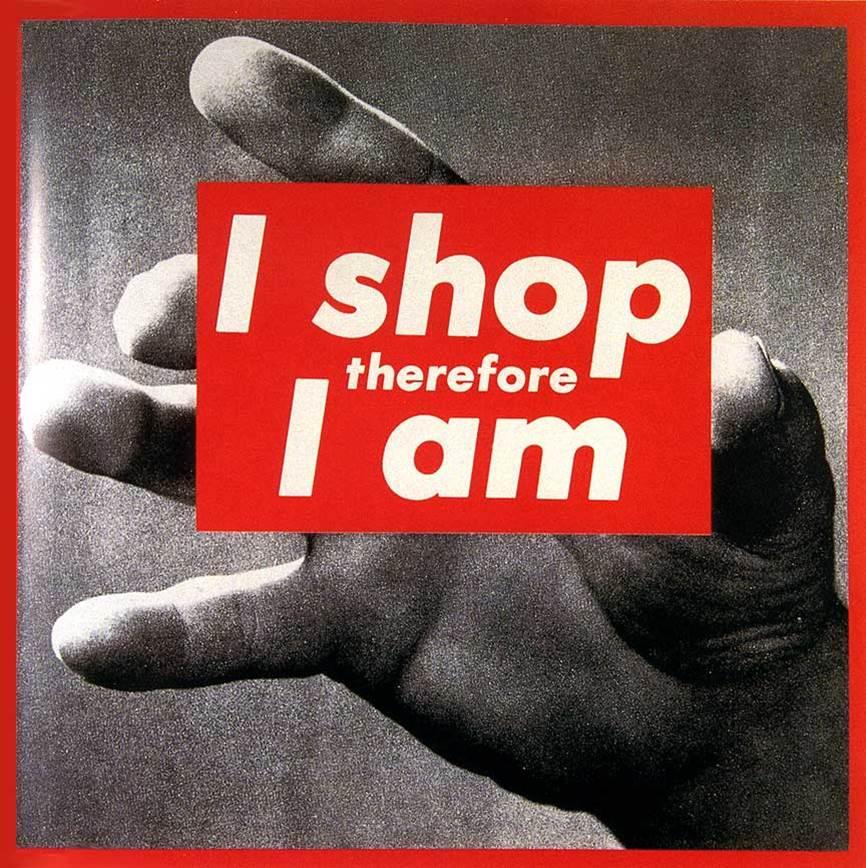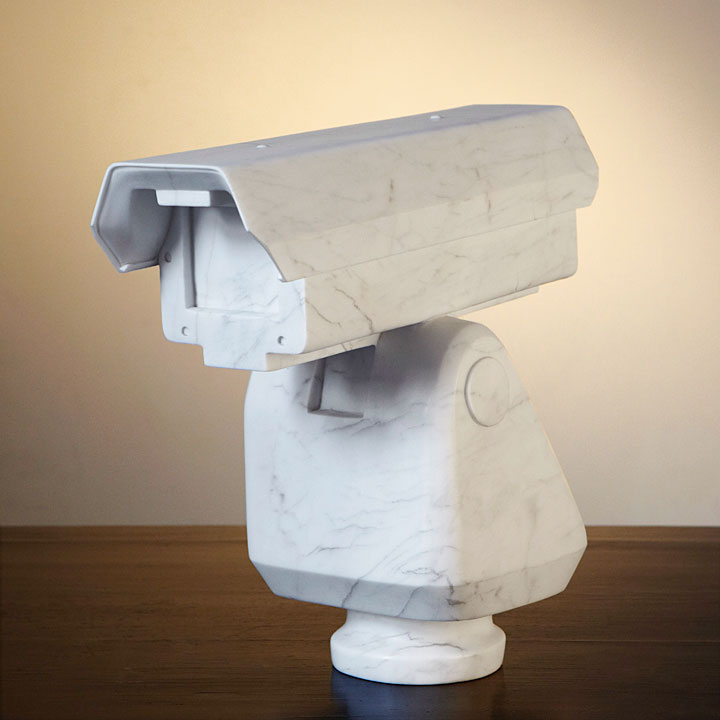
Barbara Kruger. Untitled (I shop, therefore I am), 1987. Photographic silkscreen on vinyl; 111 x 113 inches. Courtesy Mary Boone Gallery, New York.
“Inquiring Minds” is a new ART21 Magazine series, focusing on the teaching practices of ART21 Educators alumni. ART21 Educators is an intensive professional development program designed to support K–12 teachers who are interested in bringing contemporary art into the classroom. In 2013, program participant Carl Andersen developed a curriculum on global citizenship for his eighth grade language arts class, using the work of ART21 featured-artists to explore what it means to be a responsible global citizen, and to exist responsibly in terms of self, community, and society.
Jessica Hamlin: Why were these questions important to you?
Carl Andersen: I wanted to empower my students to take an active role in their learning processes through challenges that required them to think critically and creatively, bringing their interests and curiosities into the mix while fulfilling district standards. I also felt I needed to reconsider what it means to teach at the middle school level, improve at differentiating the needs of all my students, provide appropriate challenges for my Gifted and Talented students, and really strive to help students authenticate their own learning through choices while building the essential close reading and writing skills that embrace critical analysis of a text in a way that will prepare them for success in high school, college, and life.
JH: How did you bring contemporary visual artists into this investigation, and specifically into a language arts classroom?
CA: The areas that ART21 resources and the ART21 Educators community enhanced most directly were related to our investigation of how language can shape “reality”; our understanding of the interplay between form and content in a text; our sense of what an aesthetic experience consists of; our ideas about responsibility with regard to the environment; and finally our understanding of how forms of authority function in the world and shape our responsibilities to ourselves, each other, and the world.

Jenny Holzer. Truisms, 1977–79. Spectacolor electronic sign. Times Square, New York, 1986. Text: “Survival” (1983–85). Photo: John Marchael © 2007 Jenny Holzer, member Artist Rights Society (ARS), New York.
Students read Orwell’s Animal Farm and studied logical fallacies and Aristotle’s modes of persuasion, looking at examples of propaganda in the novel and in advertising and politics. We looked at Barbara Kruger’s work and Jenny Holzer’s use of truisms, coupling our discussion of Holzer’s work with aphorisms and epigrams. I used an activity from ART21’s Season 4 Educators’ Guide to help students synthesize their ideas through the creation of advertising, propaganda, or artwork in response to events in the news.
For an environmental ethics unit, we explored the photographs of Robert Adams and the work of Mark Dion in conjunction with a selection of non-fiction essays from Aldo Leopold, Rachel Carson, Bill McKibben, Gary Snyder, Henry David Thoreau, and others. Students explored the dichotomy of form and content in Adams’s photographs through reflective journals and discussions, which led to a larger discussion about the interplay of form and content as a possible mode of analysis for a visual image or text. Students explored their notions of beauty and the sublime, reflecting on Adams’s ideas about beauty as an admitted pursuit that is “suspect,” and created projects adapted from the ART21 Season 4 Educators’ Guide in which they sought to make a beautiful image from something they would otherwise deem ugly or banal and mundane.

Mark Dion. Neukom Vivarium, 2006. Mixed-media installation, greenhouse structure: 80 feet long. Installation view: Olympic Sculpture Park, Seattle. Gift of Sally and William Neukom, American Express Company, Seattle Garden Club, Mark Torrance Foundation, and Committee of 33, T2004.101. Courtesy the Seattle Art Museum
In our dystopian literature circle unit, we explored how dystopian issues related to power, authority, and surveillance impact human experience. The students studied the work of Doris Salcedo, Do Ho Suh, and Ai Weiwei in conjunction with their chosen novel—George Orwell’s 1984, Kazuo Ishiguro’s Never Let Me Go, or J.M. Coetzee’s Waiting for the Barbarians. The students first focused on finding binary oppositions in their novels, with textual evidence, consistent with the contrasts Salcedo’s work reveals and then reflected on the human costs in terms of loss in their novel. They then collaborated on group work that sought to “rescue a memory,” as Salcedo describes her work, or serve as a meditative response to loss in their novel. Student work included drawings, collages, graffiti, plans for a monument, and poems that were elegiac in tone.

Ai Weiwei. Surveillance Camera, 2006. Marble; 39.2 x 39.8 x 19 cm. Photo courtesy of the artist. © Ai Weiwei
JH: What were the major outcomes for you and your students? What did you learn?
CA: I think my students and I have an enlarged sense of what a text is, which extends beyond traditional literature selections and into other mediums, including those explored in contemporary art. Bringing contemporary art and artists into my classroom offered compelling opportunities for critical analysis, which will undoubtedly benefit the students in the future. I am now more adamant and excited about teaching with a large idea or question in mind, one that can evolve as necessary while serving to unify study. This has been a useful scaffold to build and explore from, revisit, and deepen student learning.
Embracing an interdisciplinary approach that stresses process over product, with contemporary art and artists informing our conversations about themes in literature has been a huge shift for my practice, which has granted me the freedom to explore and accept imperfections as necessary and setbacks or even failure as potentially productive, freeing up my process and giving students more choice with regard to their process.



